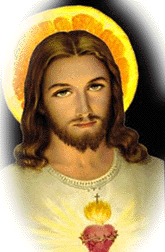|
Resurrection
of Hope
"I am the Resurrection and the
life and he who believes in me will live even when he dies"
[John 11:25]
As
the day dawns over the horizon, these words from the Book echo within the
minds of believers. This is the day they have been waiting for all the
year. This is Easter. And as with all festivities, Easter is also special
for Keralites.
Kerala, with a large Christian population, celebrates
Easter on the first Sunday after the full moon with the rest of the world. Like their brethren elsewhere
in the world, people observe lent for over one month, attends service
on Good Friday, an joyously receive the resurrection of the Lord
on Easter.
Kerala presents a unique picture, with people in both
traditional attire and modern dress making a beeline for churches early
in the morning, offering prayers, and then breaking the lent. In Kerala,
the  usual
delicacy on Easter day is the ever-favourite appam and kozhicurry (chicken
curry). Cakes, biriyani and wine follows. Another factor that sets apart
Keralite Easter is the absence of Easter eggs. usual
delicacy on Easter day is the ever-favourite appam and kozhicurry (chicken
curry). Cakes, biriyani and wine follows. Another factor that sets apart
Keralite Easter is the absence of Easter eggs.
In fact, the exchange of eggs in the springtime is a
custom that was centuries old when Christians first celebrated Easter.
From the earliest times, the egg was a symbol of rebirth and resurrection
in many cultures. Eggs were often wrapped in gold leaf, or, coloured brightly.
It is also interesting to note how the date of Easter
is fixed. Historians say that prior to A D 325, Easter was variously celebrated
on different days of the week, including Friday, Saturday, and Sunday.
In that year, the Council of Nicaea was convened by emperor Constantine.
It issued the Easter Rule which states that Easter shall be celebrated
on the first Sunday that occurs after the first full moon on or after the
vernal equinox, or first day of spring. Therefore, Easter must be celebrated
on a Sunday between the dates of March 22 and April 25. Its date is linked
to
the lunar cycle.
In the midst of all this the fun and gaiety, the real
significance of Easter is never forgotten. "I'm the Resurrection and
the Life and he who believes in me will live even when he dies."
Easter is also closely associated with spring. The new
plant life that appears in spring symbolises the new life Christians gain
because of Jesus' crucifixion and resurrection. Easter is also considered
a day of "white" because newly baptised church members wore white clothes
at Easter observances. |
 usual
delicacy on Easter day is the ever-favourite appam and kozhicurry (chicken
curry). Cakes, biriyani and wine follows. Another factor that sets apart
Keralite Easter is the absence of Easter eggs.
usual
delicacy on Easter day is the ever-favourite appam and kozhicurry (chicken
curry). Cakes, biriyani and wine follows. Another factor that sets apart
Keralite Easter is the absence of Easter eggs.